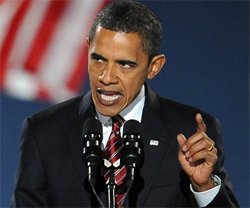
Next, using Shure’s Wireless Workbench software, the sum content of the receivers’ monitoring capabilities were used to view the RF activity in the area.
“When we assembled the receivers in the racks, I made sure we had every single frequency band legal for use in the US at our disposal,” Brumm relates. “With all this at hand, George was then able to use the collective scan features of the devices to monitor all of the RF activity in the area live and in real time.”
When Gorzelanczyk first turned on his computer and took a look at his working environment via Wireless Workbench during pre-event war games, what he saw wasn’t pretty. Virtually every centimeter of available spectrum was in use.
“But the good news was that Wireless Workbench revealed that my original blueprint for frequency coordination was accurate for the most part,” Gorzelanczyk says. “I could view intermodulations among frequencies as well, and quickly take corrective actions to safely relocate the party or parties involved.”
Viewing his RF world through Wireless Workbench and the scanning features of the UHF-R receivers, Gorzelanczyk gave better, fine-tuned coordination to everything within his reach, and that included not only wireless components being used by the press corps, but also local DTV stations, public safety bands, and even a wireless camera mounted on a roof about a mile-and-a-half away working in the 450 Hz range.
“Without a program like Wireless Workbench I would have been dancing in the dark,” Gorzelanczyk adds. “I could assign frequencies, but that doesn’t mean they aren’t going to interfere with one another. With Wireless Workbench, I could see the intermodulating components as soon as everyone turned on.
“As it turned out, my initial plan was pretty good. With Wireless Workbench, however, you always know you’re right.”
